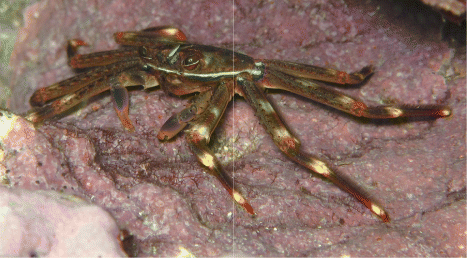Marine Biology Research has a commitment to publish high quality biodiversity research (Fenchel & Uiblein Citation2010). New records of species provide valuable biodiversity information, if the findings are communicated in a concise and well-elaborated way. In an ecosystem management context, as climate change becomes more and more apparent, the sudden occurrence of a previously unrecorded species could be interpreted as an early warning signal for immanent biotic changes triggered by, e.g., increasing sea surface temperatures. Species may however appear in a given habitat for manifold reasons.
For instance, a newly encountered species may be difficult to distinguish and/or rare, having been not sampled, or overlooked, or wrongly identified previously. In such cases, the “new record” does not reflect range extension per se but simply the continuing need for exploration accompanied by taxonomic scrutiny. Furthermore, species may be newly discovered, because they were recently introduced, by intention or accidentally, and coped with the new conditions more or less successfully.
When the term “Range extension” (or “Range expansion”) is used in the context of new or first records for a given area this implies to some extent recent immigration from other habitats. But what kind of connectivity exists to facilitate such immigration and what are the exact causes and consequences of an observed range extension? Do observed shifts in space go also hand in hand with shifts in other niche dimensions, e.g., diet, reproductive seasonality, or microhabitat use? Documentation of biogeographic affinity, local biotic interactions, or evidence for environmental impacts can provide important baseline information about a newly recorded species with regard to its potential colonization success and related ecological causes and consequences, as well as its prospects to expand even more widely.
Marine Biology Research wants to publish reports of range extensions or new records that pay attention to proper scientific documentation of those findings in terms of taxonomic accounts that involve direct comparisons with scientific reference material and preferably with types of the respective species, accompanied by the deposition of voucher specimens from the new area at a scientific collection. Especially in case of more common species, biogeographic information and/or empirical data on biotic interactions or impacts shall be provided, supplied by historical, abiotic, or population biology data to the utmost possible extent. Published examples for papers that fit into one or more of these three categories are the following:
Taxonomy: Kaga & Heemstra (Citation2012) provide a taxonomic account of the sand whiting Sillago caudicula Kaga, Imamura & Nakaya, 2010, a new record from off Madagascar (Western Indian Ocean), that includes a diagnosis and description based on comparisons with scientific reference material examined by one of the authors.
Biogeography: Abecasis et al. (Citation2009) report on the ichthyofauna of the Gorringe seamount (NE Atlantic) with ten new records, providing information on its biogeographic origin, along with data on small-scale spatial distribution.
Biotic interactions or impacts: Sciberras & Schembri (Citation2008) investigate experimentally the behavioural interactions between Percnon gibbesi (H. Milne Edwards, 1853) (), a crab species that has recently expanded into the Mediterranean, and the native Pachygrapsus marmoratus (Fabricius, 1787), together with field investigations on habitat overlap and the invasive species’ biology.

These three published examples should be especially useful for anyone interested in preparing a submission to Marine Biology Research reporting on new records or range-extensions, on the understanding that advancement in marine ecosystem exploration, monitoring and management requires profound biodiversity information to be communicated.
This editorial is in part based on a talk given at the symposium “A critical study of biodiversity studies” (INTECOL Citation2013).
Finally, our sincere thanks go to Kathrine Michalsen, who recently left us as a subject editor, and we warmly welcome Roy Kropp as our second associate editor and our new subject editors Kjellrun Hiis Hauge (Fisheries Management and Socioecology) and Dan Smale (Benthos Monitoring and Conservation)!
Franz Uiblein
Editor
References
- Abecasis D, Cardigos F, Almada F, Gonçalves JMS. 2009. New records on the ichthyofauna of the Gorringe seamount (Northeastern Atlantic). Marine Biology Research 5:605–11.10.1080/17451000902729696
- Fenchel T, Uiblein F. 2010. Biodiversity in concert: Common, uncommon, and new species. Marine Biology Research 6:1–5.10.1080/17451000903468856
- INTECOL. 2013. A critical study of biodiversity studies. Joint Oikos/Ecography Symposium, INTECOL 2013 - Into the Next 100 Years conference, London, UK. http://www.intecol2013.org/ (accessed 15th September 2013).
- Kaga T, Heemstra E. 2012. First record of a rare sand whiting, Sillago caudicula (Perciformes: Sillaginidae), from Madagascar. Marine Biology Research 9:316–20.10.1080/17451000.2012.742547
- Sciberras M, Schembri PJ. 2008. Biology and interspecific interactions of the alien crab Percnon gibbesi in the Maltese Islands. Marine Biology Research 4:321–32.10.1080/17451000801964923
